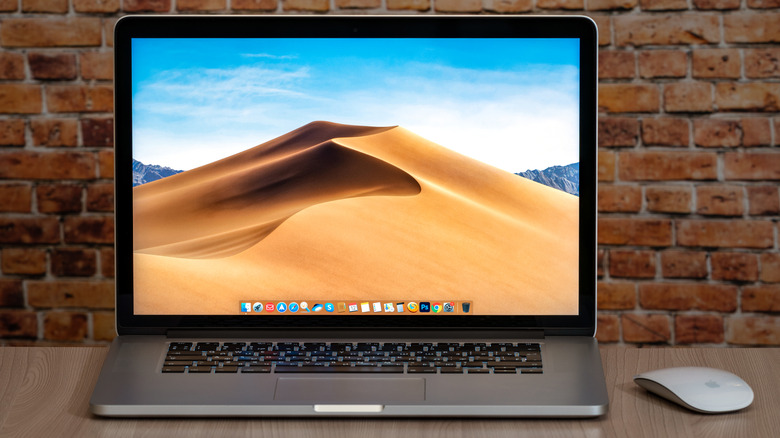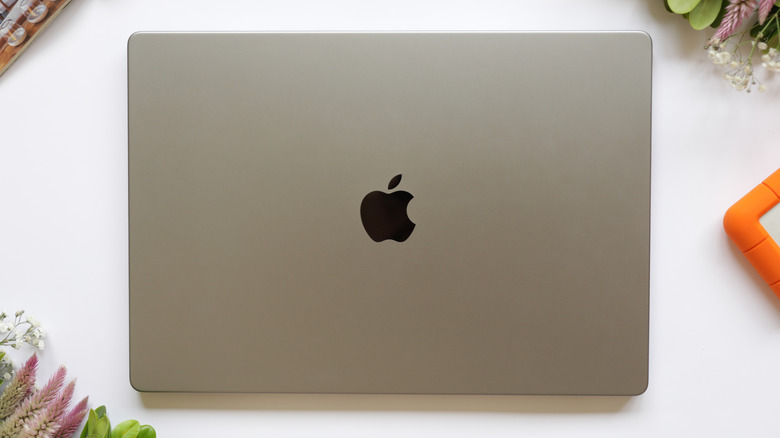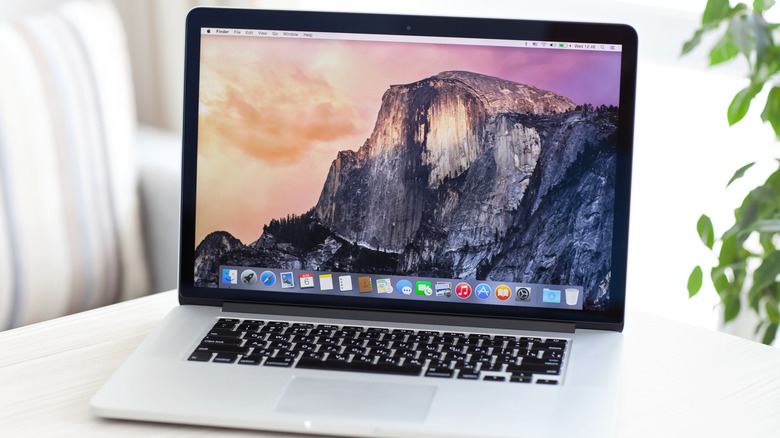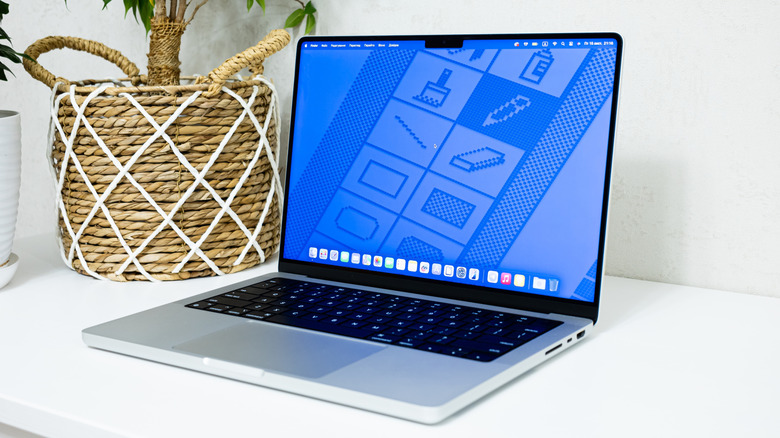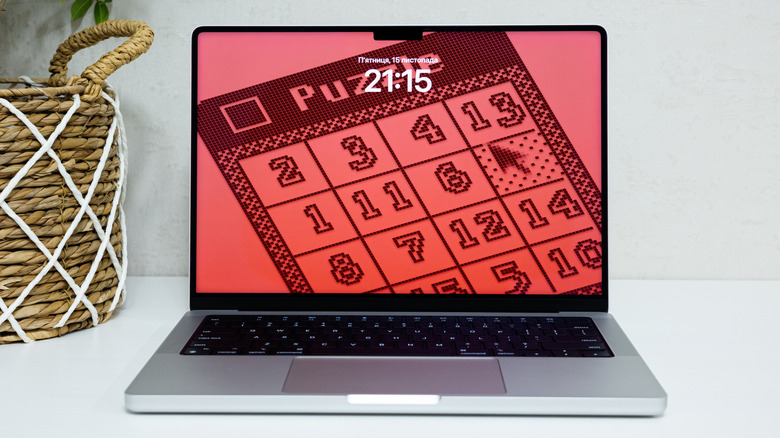The 5 Most Common MacBook Problems (And How To Fix Them)
Owning a MacBook is pretty sweet. Whether it's an M4 MacBook Air or an M1 MacBook Pro, people typically love the devices for their speed, portability, and performance. It's also great because macOS updates bring a host of new features regularly. Although useful, not every MacBook experience is going to be flawless. Issues happen — and you may find yourself encountering some small problems.
Common problems on a MacBook include Wi-Fi and Bluetooth connection issues, battery drain, slow performance, and a sluggish internet browser. Fortunately, most of these issues can be fixed through a few settings tweaks, a restart, or through built-in apps that can help with the situation. It's a great idea to know a few basics about diagnosing and fixing your machine.
Before diving into the problems and solutions below, bear in mind that running the latest version of macOS your device supports is a great way to avoid many common or simple issues. Checking for an update is as easy as navigating to Apple > System Settings > General > Software Update from the menu bar and selecting Update Now if one is available. It's also a good idea to make sure that all of the apps on your MacBook are up-to-date, either by finding them in the App Store or updating them through the app itself.
MacBook not connecting to Wi-Fi
A MacBook not connecting to Wi-Fi can be a common problem and an annoyance. Fortunately, there are several things you can do to get faster Wi-Fi speeds. Ensure you have an active Wi-Fi connection by clicking the Wi-Fi icon in the top-right corner of your screen. Ensure Wi-Fi is enabled and you have a network selected. Next, reset your MacBook by navigating to Apple > Restart from the menu bar.
Be sure to check if your date and time settings are accurate, as inaccuracies may cause issues. To do so, ensure Set time and date automatically is enabled in the System Settings. You should also make sure that your Wi-Fi router is operational. Give it a reset, or check your user manual for other options. Disable any VPNs you have, as they may be interfering. If you have a VPN, you should see an icon in your menu bar in the top-right, which allows you to disable it. Or you can disable your VPN from Apple > System Settings > VPN. Lastly, you can also use the Wireless Diagnostics tool, which can give recommendations. Locate the tool by holding Option on your keyboard while clicking the Wi-Fi icon in the menu bar, or you can find it through a Spotlight Search.
Experiencing Bluetooth issues
Just like experiencing issues with Wi-Fi, having problems with Bluetooth can be another common MacBook problem. If you find that your Bluetooth-enabled devices aren't connecting, or they're behaving strangely while connected, there are a couple of things you can check. As a first step, restart your machine to see if this solves your issues. Make sure to remove all USB devices before performing a restart.
You can toggle Bluetooth on and off directly from Control Center in the top-right corner of the menu bar, or you can disconnect it and reconnect it directly from System Settings > Bluetooth. While in this menu, you can also disconnect and reconnect Bluetooth devices. Simply hover over the device, select Disconnect, then reconnect it. Clicking on the information icon (capital I) near the device name will allow you to forget the device entirely, allowing you to pair it again.
One last thing you can also try is resetting your MacBook's Bluetooth module. Note this will disconnect all your Bluetooth accessories.
-
Open Terminal. It's commonly found in Applications > Utilities.
-
Type this command: sudo pkill bluetoothd
-
Hit return, and enter your password if asked.
If you're using macOS Big Sur or earlier, follow these steps:
-
Press and hold Option + Shift on your keyboard, then click the Bluetooth icon in your menu bar.
-
Select Reset the Bluetooth module.
-
Confirm your decision.
-
Your Bluetooth devices will momentarily disconnect as the reset occurs. They should reconnect automatically.
MacBook experiencing battery drain
Another common issue a MacBook user can experience is a draining battery. While lithium-ion batteries do degrade naturally over time, you have some options if you think your battery could be performing better. Check your battery level and screen usage via System Settings > Battery. This menu also shows your Battery Health and lets you know if you're experiencing any problems. If you click the information icon next to Battery Health, you can enable Optimized Battery Charging, which can help increase the longevity of your device.
You can also use Activity Monitor to see what apps use the most power. Find it in your Applications > Utilities folder or through a Spotlight Search. The Energy tab at the top of Activity Monitor will bring you a list of the most energy-intensive apps and programs, and you can also click the Energy Impact column to organize what is using the most power. Select any application and then click the X icon to close or force close the app.
The MacBook's display may also be using a large amount of power. Adjust the brightness of your screen by navigating to System Settings > Display. Consider disabling Automatically adjust brightness from this menu as well. You can also disable things like Bluetooth and Wi-Fi when you're not using them, which you can easily do from Control Center in the menu bar. Lastly, take advantage of Low Power Mode if your device supports it, which disables certain animations and features. This can easily be enabled and disabled from your battery icon in the menu bar or directly at the top of Battery settings.
MacBook has sluggish performance
A MacBook that isn't running its best isn't all that useful, which can unfortunately be a common problem for those who don't have the right solution. If you feel that your MacBook isn't performing as well as it should, there's a couple of built-in Apple apps that may help with your situation.
Like looking at battery issues, Activity Monitor can also be your friend if you're having performance issues. However, instead of looking at the Energy tab like with your battery, navigate to the Memory tab within Activity Monitor. This will tell you what apps are using the most RAM on your device. As with the Energy tab, clicking on an app from the list and then selecting the X gives you the option to Quit or Force Quit the app.
Your Utilities folder also has the Disk Utility app, which may help fix your drive if you're experiencing problems. Try running this program to see if your device has any solutions or recommendations. Simply open Disk Utility, choose a volume, and then select First Aid, and your Mac will check for errors within your drive. Finally, be sure to check System Settings > General > Storage from the Apple Menu to see if your storage is full. This not only gives you an idea of what's available on your drive, but depending on what version of macOS you're using, you may also have options for storing files through iCloud, optimizing your store, and emptying your trash automatically.
A slow internet browser
Along with potential Wi-Fi problems mentioned above, you may be experiencing issues with your internet browser. If you find that websites aren't loading as quickly as they used to, or you feel you're getting an overall poor experience online, there's some things you can do about it. Along with making sure the browser is up-to-date, one quick thing you can do is clear your internet browser's cache. Just like clearing the cache on an iPhone, your internet browser stores temporary files that are meant to help load websites quicker. However, too many cache files can cause issues, especially if they are corrupt.
Clearing your cache in Apple's Safari is fairly easy:
-
Open Safari.
-
Navigate to History in the menu bar.
-
Select Clear History.
-
Select your timeframe and then click Clear History.
The steps will look similar in other browsers. For example, in Google Chrome, you'll tap the three dots in the upper-right corner, click Delete browsing data, select your timeframe and data to delete, and then simply click Delete data.
Along with clearing your cache, you should also remove any extensions you're no longer using. In Safari, simply navigate to Safari > Settings (Preferences) from the menu bar and select Extensions. Simply choose the extension you want to remove and click Uninstall. For Google Chrome, select the three dots, click More Tools, and then click Extensions. Then simply click the extension you want to remove, click Remove, and confirm your decision.
